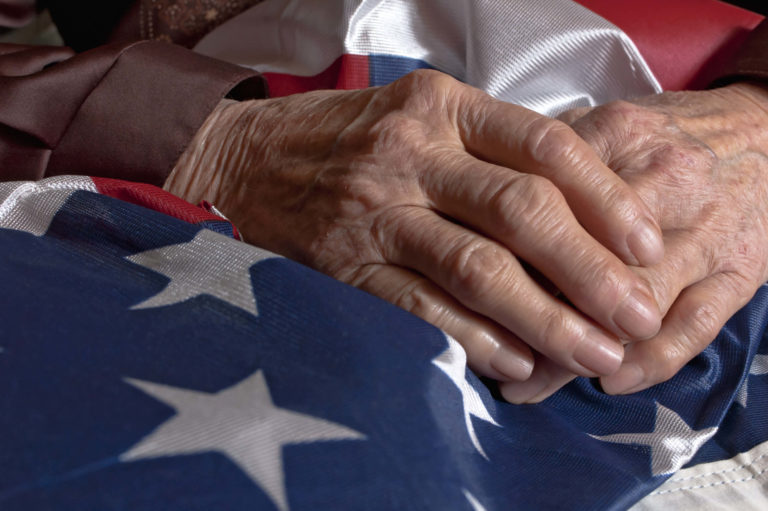VA’s Benefit of the Doubt Doctrine

VA’s Benefit of the Doubt doctrine is a statutory and regulatory example of the non-adversarial nature of the VA disability claims process. When it comes to a balance of evidence, the tie is supposed to go the veteran. How does it work in practice?
Explaining the Benefit of the Doubt Doctrine
The Benefit of the Doubt doctrine is outlined in 38 USC § 5107(b) and 38 CFR § 3.102. Specifically, it states, “by reasonable doubt is meant one which exists because of an approximate balance of positive and negative evidence which does not satisfactorily prove or disprove the claim.” Essentially, this means that if there is an equal balance of positive and negative evidence of a veteran’s entitlement to a benefit, VA is supposed to rule in favor of the veteran. This is further established in 38 CFR § 4.3, which states, “When after careful consideration of all procurable and assembled data, a reasonable doubt arises regarding the degree of disability such doubt will be resolved in favor of the claimant.”
Importantly, veterans are not required to cite these statutes and regulations when making arguments to support their claims. Instead, this is the operative standard of proof VA should be applying in every case.

VA’s Evidentiary Standard
VA has a certain evidentiary standard, or “standard of proof,” when it looks at veterans’ claims for disability benefits. The “at least as likely as not” language addresses this standard for proving service connection. Unlike the standard of proof in criminal cases, veterans do not have to show “beyond a reasonable doubt” that their disability was caused by service. Instead, veterans must show that it is “at least as likely as not” caused by service. VA’s evidentiary standard is a much less stringent burden for veterans and is part of the non-adversarial nature of the VA disability claims process. However, if a veteran receives an unfavorable nexus opinion from a Compensation & Pension examiner, it will likely say “it is less likely than not” that the veteran’s condition is due to service. In this case, it means that VA found that it is less than 50 percent likely that the veteran’s condition is linked to their time in service. Therefore, language is very important as it is what VA looks for when adjudicating claims for service connection.
How VA Applies the Benefit of the Doubt Doctrine
The Benefit of the Doubt doctrine does not guarantee that VA will grant benefits simply because a veteran submitted favorable evidence. VA still has to weigh the evidence in the veteran’s record. In doing so, VA looks at the competency and credibility of the evidence. Competency refers to whether the person providing the evidence is competent to talk about the issue at hand. For example, veterans are not competent to opine on medical issues; however, they are competent to talk about how those medical issues impact them on a daily basis. Credibility refers to whether the evidence is consistent with the other evidence of record. If VA finds that the evidence is both competent and credible, then it is favorable to the veteran. Under the Legacy appeals system, such favorable findings are not binding. Namely, if the Regional Office makes a favorable finding, the Board can still decide it is not favorable upon its de novo (i.e. new look) review. However, under the new appeals system, favorable findings are binding on the rest of VA going forward. Therefore, the Board cannot reverse any favorable findings of fact the Regional Office made.
One of the most common situations in which the Benefit of the Doubt doctrine applies involves conflicting medical opinions. If there is a medical opinion from a private physician that states their disability is at least as likely as not due to service, and there is also an unfavorable opinion from a VA examiner in the record, then the Benefit of the Doubt doctrine would likely come into play as this could count as a balance of positive and negative evidence. Here, VA should apply the Benefit of the Doubt, give more weight to the evidence that favors the veteran, and ultimately grant service connection.
Problems with the Benefit of the Doubt Doctrine
The main issue with the Benefit of the Doubt doctrine is: who decides how to weigh the evidence? VA raters, Decision Review Officers (DROs), and Board judges weigh the evidence in the veteran’s file, but there is no way to know if they are all weighing the evidence the same. This inconsistency can harm veterans and result in the negative evidence being given more weight than the positive evidence in the file.
This rule also only applies if there is a balance of the evidence. If there is more negative evidence in the file than positive evidence, then the Benefit of the Doubt does not apply. However, submitting lay statements, either from the veteran or friends or family members, can be helpful in tipping the scales in terms of the balance of the evidence. It can help if veterans are aware what is in their claims file so they can see if they need to submit more positive evidence to help put the Benefit of the Doubt doctrine into play in their case.
Benefit of the Doubt and Increased Rating Claims
The Benefit of the Doubt doctrine also applies to increased rating claims as outlined in 38 CFR § 4.7. Specifically, whenever there is any doubt as to which evaluation should be assigned, VA must pick the higher of the two that can be assigned. For example, a veteran currently has a 30 percent disability rating for PTSD. A recent examination shows that the veteran meets some of the rating criteria for a 30 percent rating along with some of the rating criteria for the 50 percent rating. VA should award the 50 percent as the veteran’s PTSD more closely approximates that rating.
About the Author
Share this Post
